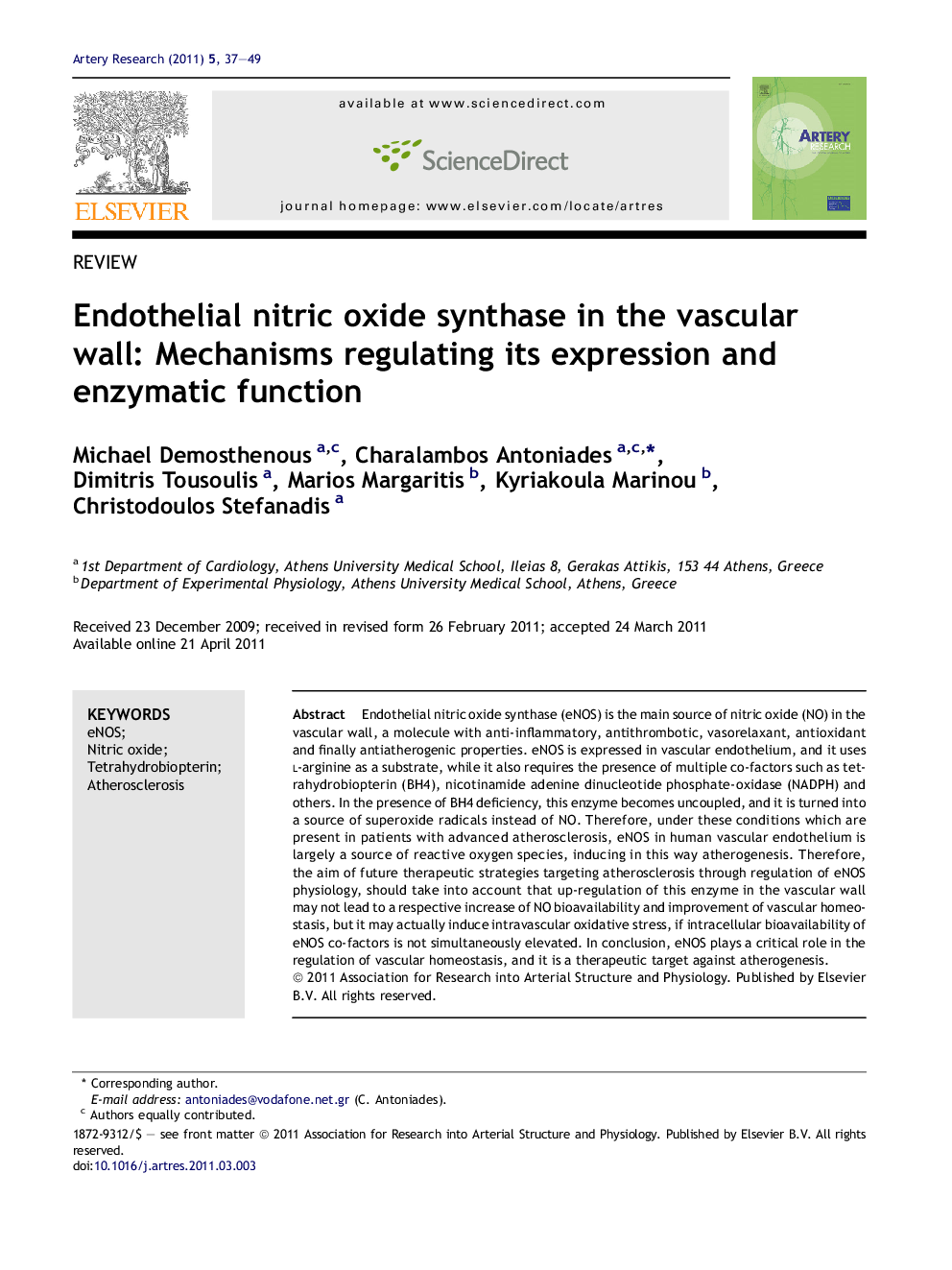| Article ID | Journal | Published Year | Pages | File Type |
|---|---|---|---|---|
| 2891931 | Artery Research | 2011 | 13 Pages |
Endothelial nitric oxide synthase (eNOS) is the main source of nitric oxide (NO) in the vascular wall, a molecule with anti-inflammatory, antithrombotic, vasorelaxant, antioxidant and finally antiatherogenic properties. eNOS is expressed in vascular endothelium, and it uses l-arginine as a substrate, while it also requires the presence of multiple co-factors such as tetrahydrobiopterin (BH4), nicotinamide adenine dinucleotide phosphate-oxidase (NADPH) and others. In the presence of BH4 deficiency, this enzyme becomes uncoupled, and it is turned into a source of superoxide radicals instead of NO. Therefore, under these conditions which are present in patients with advanced atherosclerosis, eNOS in human vascular endothelium is largely a source of reactive oxygen species, inducing in this way atherogenesis. Therefore, the aim of future therapeutic strategies targeting atherosclerosis through regulation of eNOS physiology, should take into account that up-regulation of this enzyme in the vascular wall may not lead to a respective increase of NO bioavailability and improvement of vascular homeostasis, but it may actually induce intravascular oxidative stress, if intracellular bioavailability of eNOS co-factors is not simultaneously elevated. In conclusion, eNOS plays a critical role in the regulation of vascular homeostasis, and it is a therapeutic target against atherogenesis.
